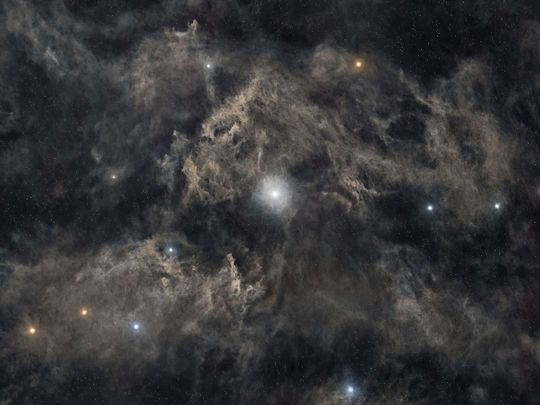
If you ask people around you which star they think is the brightest in the night sky, they will probably say the North Star. But, is it, really?
Click start to play today’s space-themed Word Search!
The North Star, which actually goes by the name Polaris, is located 434 light-years away from Earth and is 4,000 times brighter than our sun. However, it ranks only in the middle of the range when it comes to starry brightness, according to astronomy news website Space.com.
In fact, it is graded as number 46 on US-based Michigan State University (MSU) Abrams Planetarium’s list of the brightest stars as seen from the Earth at night. The star called Sirius, which coincidentally means “scorching” in Greek, is the brightest star, at a distance of nine lightyears from our planet.
But don’t discount the North Star just yet. Polaris is still significant, because the axis of the Earth is pointed directly at it. At night, Polaris remains in the same spot even as all the other stars circle around it, and can always be found due north, which explains why it was beloved to sailors and others who navigated by the stars in ages past.
Did you know US space agency National Aeronautics and Space Administration (Nasa) beamed the Beatles song “Across the Universe” to the North Star in 2008, in honour of Nasa’s 50th anniversary?
Unfortunately, one day, Polaris will stop being the Earth’s North Star, and scientists estimate that this will happen in 2100. Imagine a spinning top that wobbles – it is subject to a force called torque. Something similar happens to the Earth as it spins on its axis, and is affected by the gravitational forces of the sun and moon.
Earth’s wobble is called precession, according to Science.com, and it’s the reason why different stars have become the North Star at different times. When Greek philosopher Plato was alive in 400 BC, Kochab from the Guardian constellation was the North Star, and when the pyramids were being built in ancient Egypt in 2600 BC, Thuban in the constellation of Draco held that position.
The next North Star may be Vega, one of the brightest stars in the sky (it’s number five on the MSU list). Who knows, perhaps future generations will look for it in the night sky, as we do now!
Play today’s Word Search and explore space. Let us know if you enjoyed it at games@gulfnews.com.




